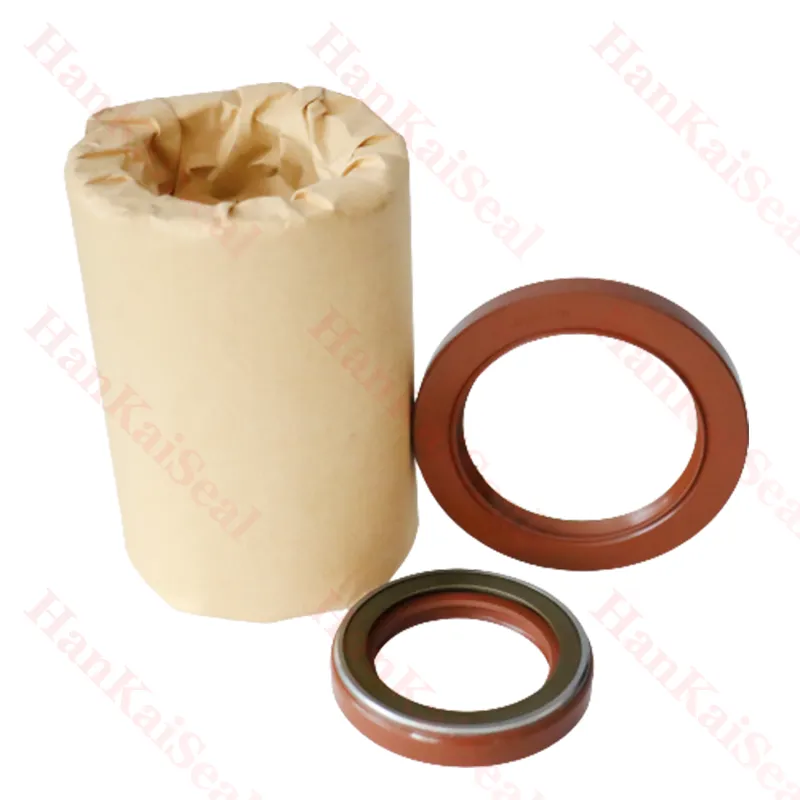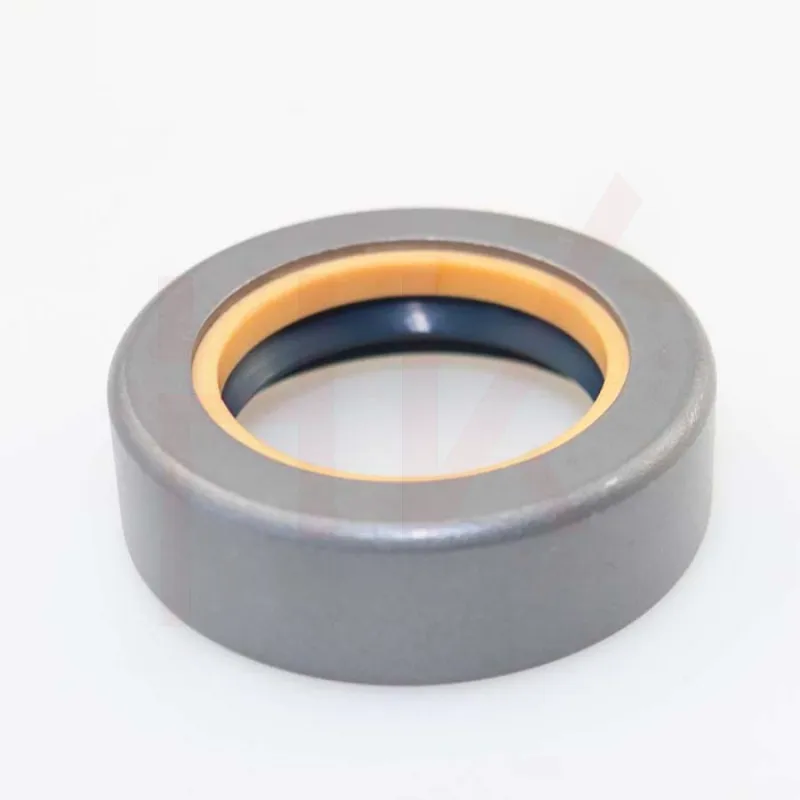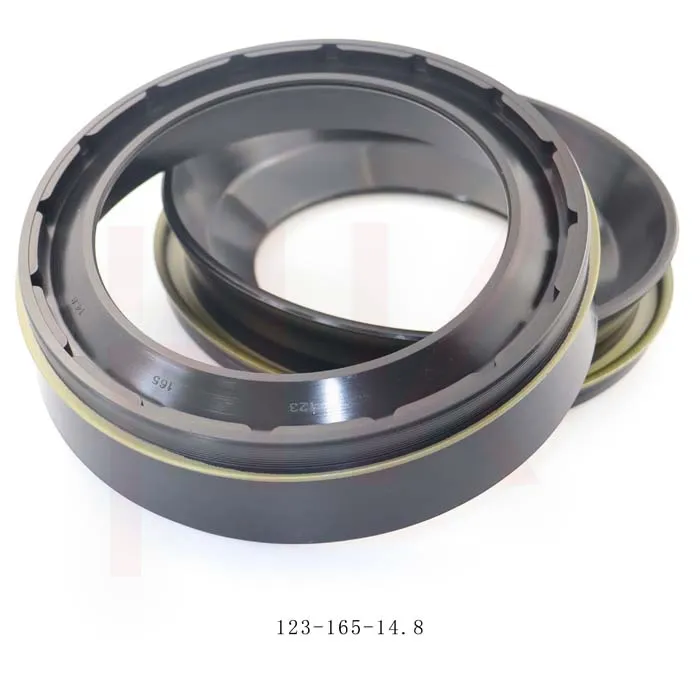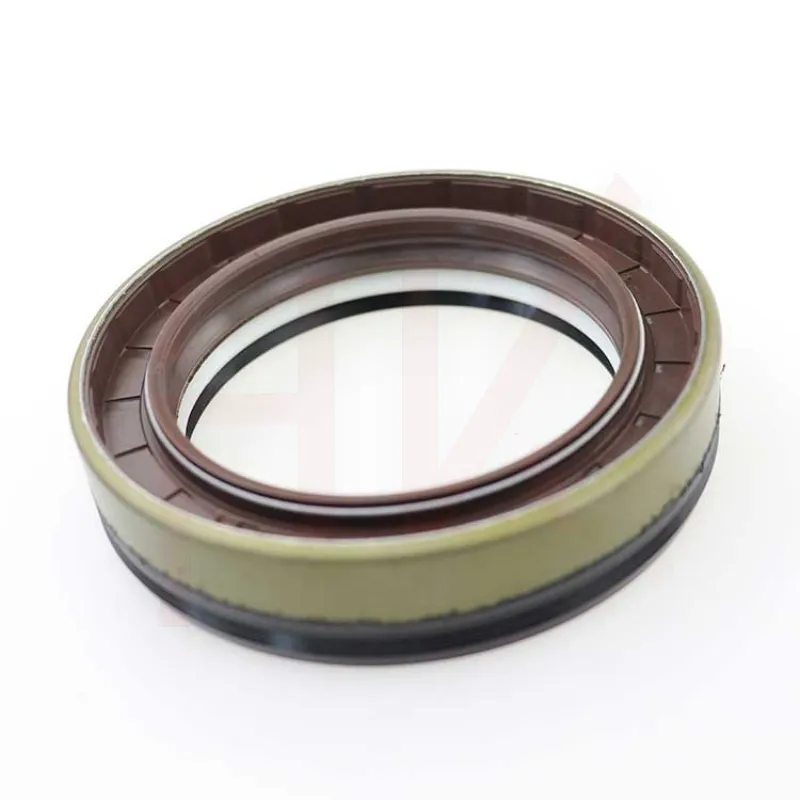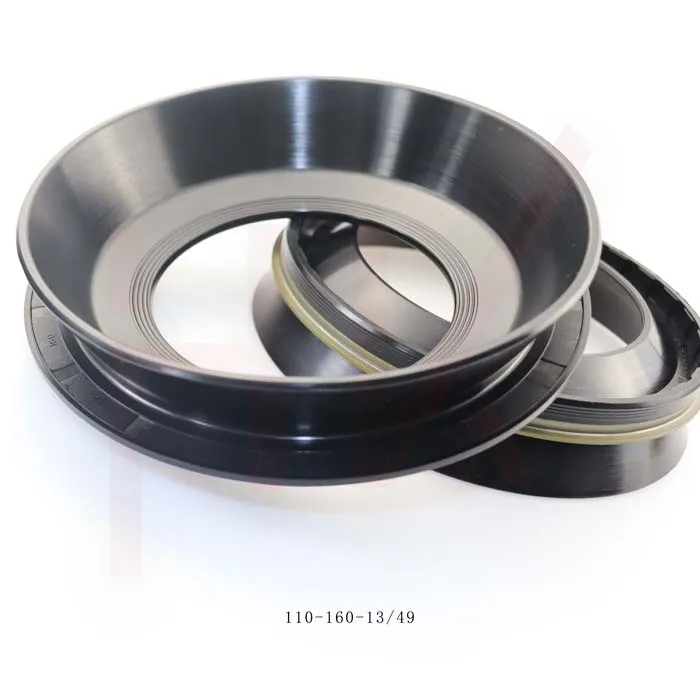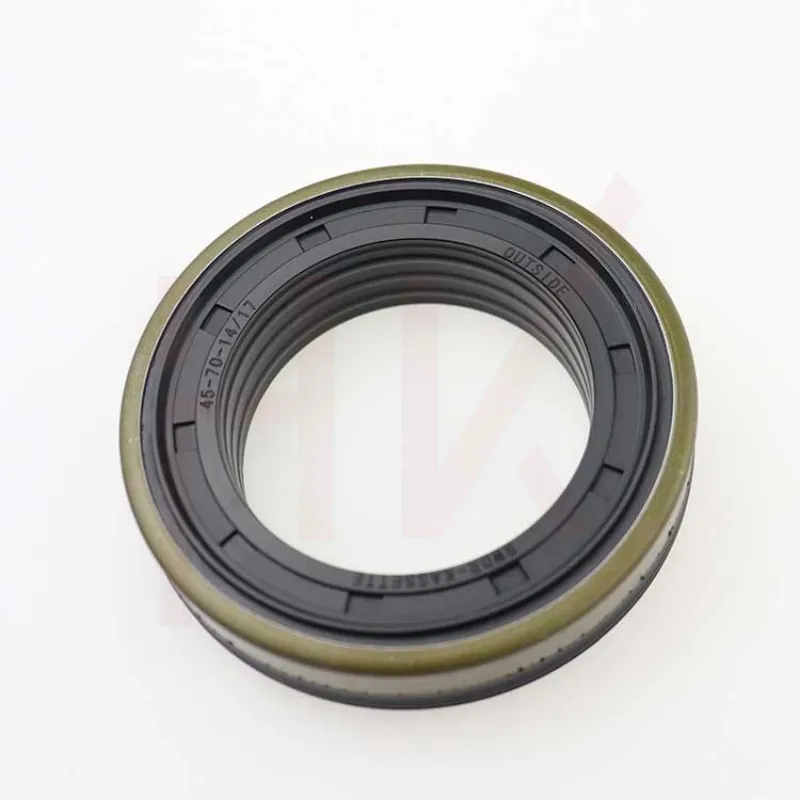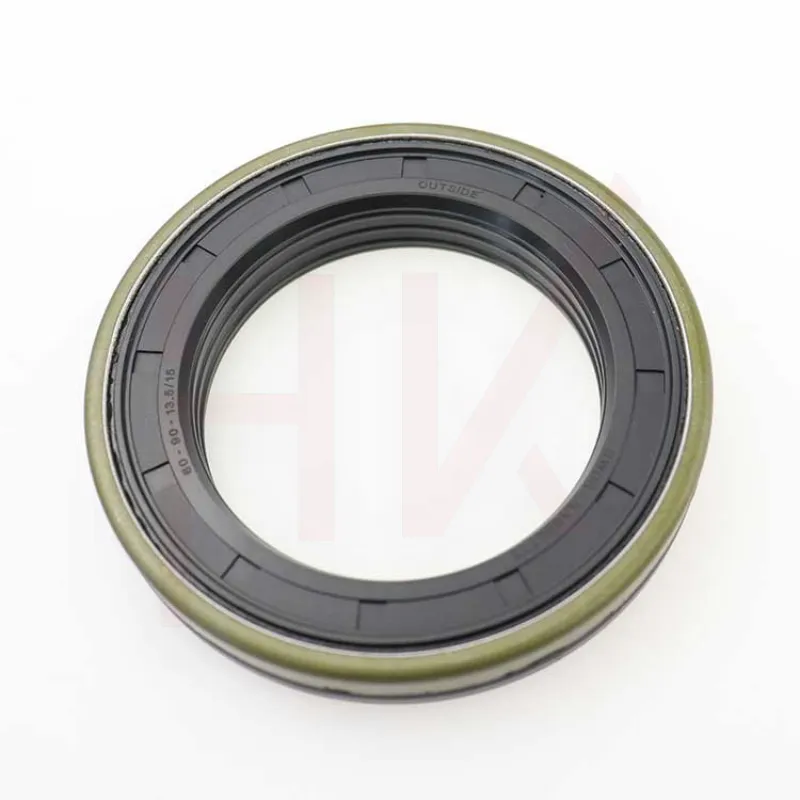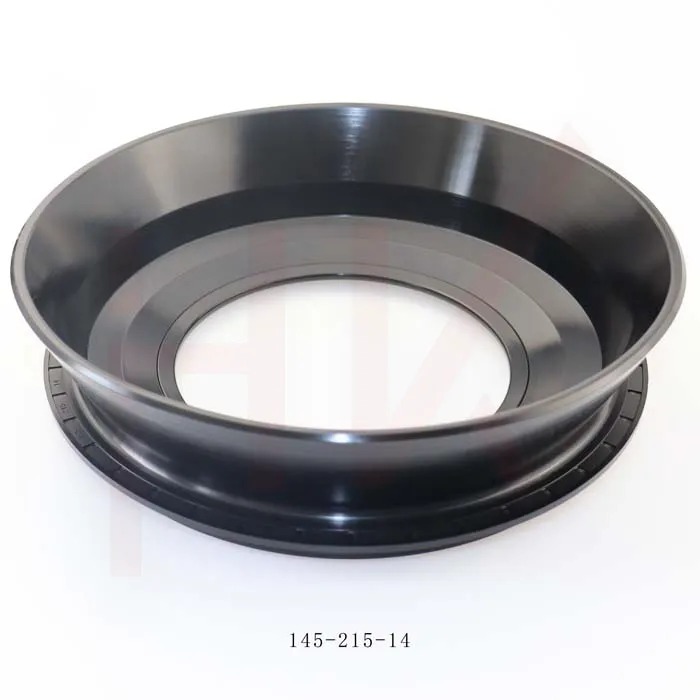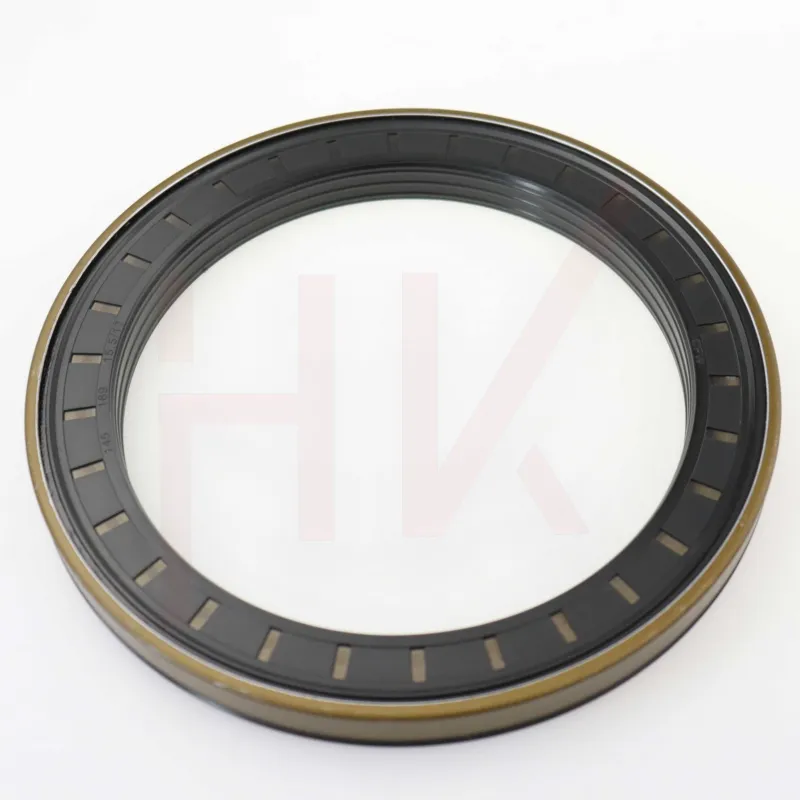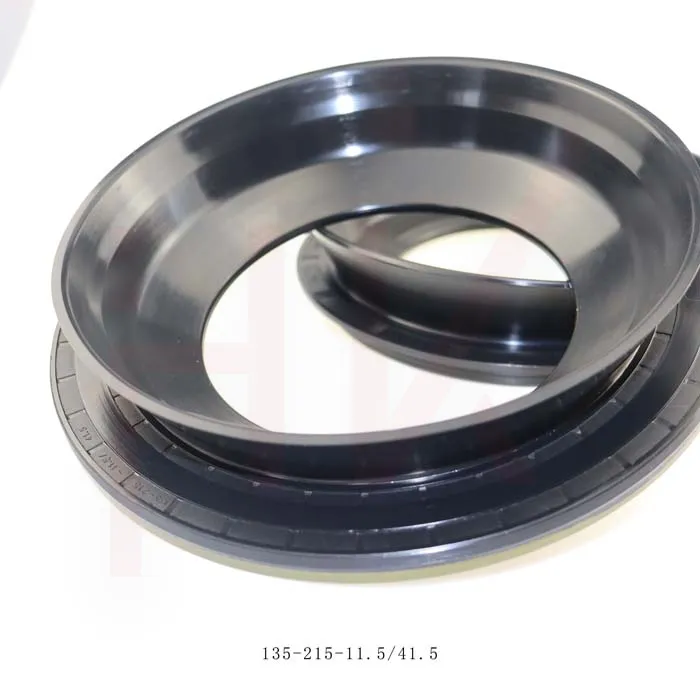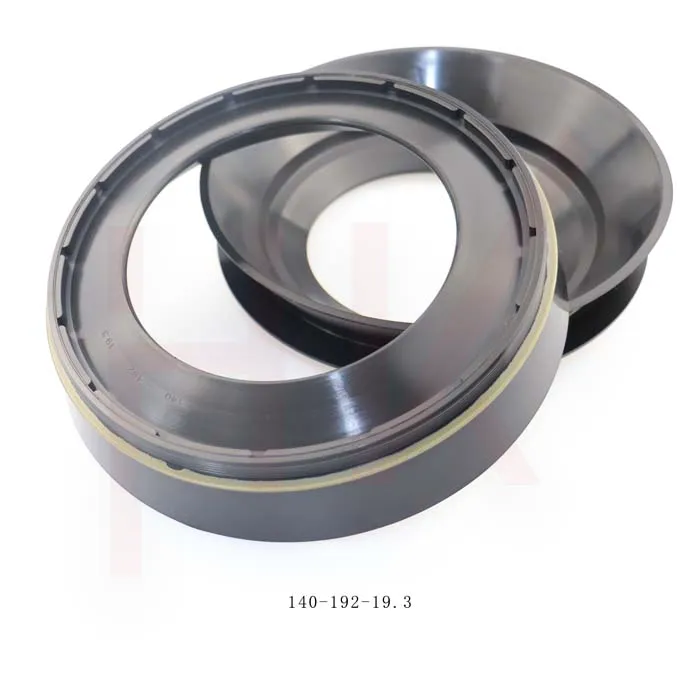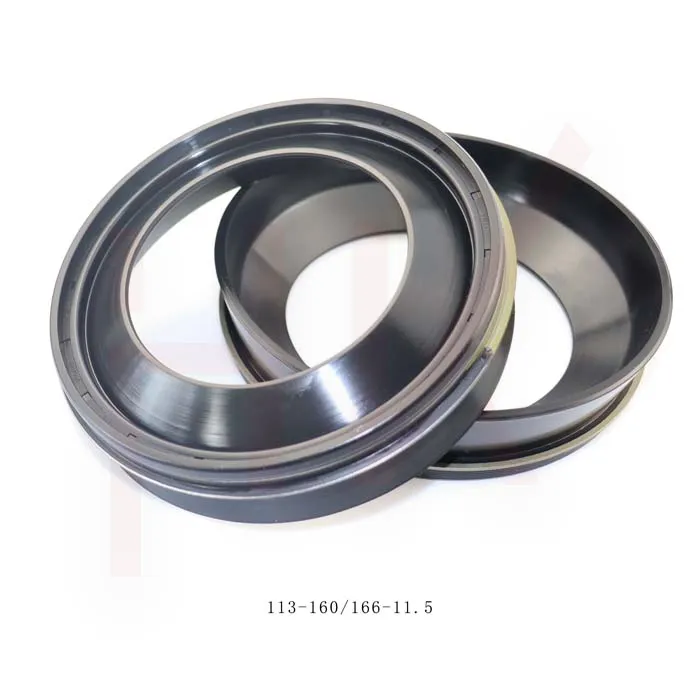Nov . 20, 2025 18:00 Back to list
Understand Rod Wiper Seal Benefits, Applications & Future Trends | HKAI Seal
The Rod Wiper Seal: Small Component, Big Industry Impact
At first glance, a rod wiper seal might seem like an inconspicuous piece of machinery—just a rubber lip or a ring clinging to a hydraulic rod. But its role in heavy industry, automotive applications, and manufacturing? Absolutely pivotal. Essentially, these seals keep hydraulic or pneumatic cylinders clean and functioning by wiping away contaminants — dirt, dust, moisture — before they can sneak inside and cause costly damage.
Understanding this humble seal offers insights into equipment longevity, maintenance costs, and even environmental impact. Globally, industries lose billions each year from seal failures, unplanned downtime, and repairs — so the rod wiper seal isn’t just a "nice to have"; it’s a necessity that touches everything from construction in remote deserts to food production plants in Europe.
Why the Rod Wiper Seal Matters on a Global Scale
It’s easy to overlook: yet, seals like these are everywhere hydraulic or pneumatic systems operate. According to ISO standards, machines worldwide undergo regular maintenance to ensure seals maintain integrity — a nod to their importance in global logistics, manufacturing, and public infrastructure.
Think about it — a rod wiper seal failure in an offshore oil rig, or in heavy machinery clearing debris after natural disasters, can cost millions, threaten safety, and halt emergency operations. The World Bank estimates that losses from equipment downtime in emerging markets alone can reduce GDP growth by 0.5% annually.1
Addressing rod wiper seal challenges means enhanced machine uptime, fewer contaminants entering vital systems, and ultimately, a safer environment for workers and communities worldwide.
What Exactly Is a Rod Wiper Seal?
Put simply, a rod wiper seal is a specialized lip or ring designed to scrape dirt and moisture off a hydraulic or pneumatic cylinder rod as it retracts into its housing. Imagine it as a tiny windshield wiper for industrial machinery — only instead of clearing rain, it clears potential harm-bearing particles.
This component is crucial for preventing contaminants from entering the cylinder, which if left unchecked, can cause wear, corrosion, and eventual seal failures in other components. It’s directly tied to modern industry’s push for durability and efficiency, catering even to humanitarian operations where reliable machinery can mean the difference between rapid recovery and prolonged hardship.
Mini takeaway:
- Rod wiper seals act as the first defense line against contaminant intrusion in cylinders.
- This small part extends the life and reliability of larger industrial machinery.
Core Components That Make Rod Wiper Seals Work
1. Durability and Material Selection
Most rod wiper seals are constructed from polyurethane, nitrile rubber, or PTFE — each offering a balance of flexibility, wear resistance, and temperature tolerance. The choice depends on the application: heavy construction equipment demands abrasion-resistant materials, whereas food-grade machinery opts for FDA-approved compounds.
2. Precision Design and Fit
Seals must have an exact fit to the rod diameter and housing groove. Too loose, and contaminants sneak past; too tight, and friction causes premature wear. Many engineers swear by profiles optimized through CAD simulations, ensuring a "just right" sealing effect that lasts thousands of cycles.
3. Resistance to Harsh Environments
Rod wiper seals frequently operate in gritty, wet, or chemically aggressive settings. Their ability to maintain performance despite exposure to dust, water, hydraulic oils, and extreme temperatures is vital. That’s why some feature UV-resistant coatings or special lip geometries to fend off environmental stress.
4. Maintenance-friendly Features
For large equipment or systems in hard-to-reach locations, seals that allow for easier installation and replacement reduce downtime and labor costs — a practical consideration often built into modern designs.
Mini takeaway:
- The best rod wiper seals balance material toughness with a perfect fit.
- Design details directly contribute to operational efficiency and cost savings.
Rod Wiper Seal in Action: Global Applications
From the oil sands of Canada to the rice paddies of Southeast Asia, rod wiper seals are quietly at work—critical components in:
- Construction machinery: Ensuring loaders and excavators keep dirt and debris out, vital in urban and rural projects alike.
- Automotive manufacturing: Protecting hydraulic presses and robots that shape and assemble car parts.
- Agricultural equipment: Combining ruggedness with quick repairability to keep planting and harvesting on schedule.
- Disaster relief operations: Hydraulics in cranes and pumps that aid recovery efforts depend on reliable seals to avoid failures in the field.
Oddly enough, a failure of a tiny seal in a remote industrial zone can ripple to affect global supply chains or emergency response times — the unsung hero that keeps things moving.
Product Specification at a Glance
| Specification | Typical Range | Comments |
|---|---|---|
| Rod Diameter Compatibility | 5 mm – 250 mm | Varies by model and vendor |
| Operating Temperature | -40°C to +120°C | High-temp variants available |
| Material Options | PU, NBR, PTFE, FKM | Selected by resistance need |
| Max Operating Speed | Up to 15 m/s | Depends on seal profile |
| Typical Lifespan | 1 to 5 years | Subject to usage & conditions |
Comparing Leading Rod Wiper Seal Vendors
| Feature | Vendor A | Vendor B | Vendor C |
|---|---|---|---|
| Material Variety | PU & NBR | All common types | Customized blends |
| Delivery Time | 2-4 weeks | 1-3 weeks | Expedited available |
| Technical Support | Standard | 24/7 Expert Line | On-site consultation |
| Sustainability Practices | Recyclable materials | ISO 14001 certified | Green energy manufacturing |
Advantages & Long-Term Value of Using Quality Rod Wiper Seals
There’s an emotional satisfaction in picking parts that just work—trusting the machine will carry on day after day without unexpected hiccups. Quality rod wiper seals reduce leakage rates, improve machine reliability, and decrease maintenance intervals, which means fewer emergency repairs and lower operational costs. This translates to safer workplaces and more predictable project timelines. It’s also a sustainable choice — prolonged machine life means less waste and fewer raw materials consumed.
From a social perspective, industries using reliable seals support local employment by maintaining continuous operations, and in humanitarian contexts, they can be a quiet cornerstone of dignity—machines that work smoothly help deliver essentials on time.
Looking Ahead: Innovations and Future Trends
High-performance polymers and nanocoatings are beginning to revolutionize rod wiper seal manufacturing, yielding components that last longer and resist more extreme environments. Meanwhile, digital transformation allows condition monitoring tools to predict seal wear before failures occur, triggering maintenance alerts rather than surprises.
There’s also growing emphasis on eco-friendly compounds and circular manufacturing to meet stricter regulations and corporate sustainability goals — so we can expect rod wiper seals to become even more green and smarter over the next decade.
Common Challenges & Expert Solutions
Despite advances, rod wiper seals face challenges like material degradation under UV exposure, improper installation, or exposure to unexpected chemicals. Many failures originate from mismatched seal materials or incorrect dimensions.
Experts recommend rigorous specifications verification, using vendor test data, and training maintenance personnel. Some manufacturers now provide installation kits and online tutorials to ease one of the biggest pain points. It’s a small investment with outsized returns — literally preventing breakdowns before they start.
FAQ: Common Questions About Rod Wiper Seal
- How do I know if a rod wiper seal needs replacement?
- Look for signs like hydraulic fluid leaks, visible damage on the seal lip, or increased machine contamination. Regular inspections every 6 months help catch wear early.
- Can rod wiper seals be customized for unique machinery?
- Absolutely. Many vendors offer bespoke sizing and materials based on your equipment's environment and operating conditions.
- What industries rely most heavily on rod wiper seals?
- Heavy machinery, automotive manufacturing, agriculture, aerospace, and oil & gas sectors use them extensively.
- Is there an ideal material for all environments?
- No. Material choice depends on temperature, chemical exposure, and mechanical stresses. Consult with suppliers to match your needs.
- How do rod wiper seals contribute to environmental sustainability?
- By preventing leaks and extending machinery life, they reduce waste and lower the need for resource-intensive repairs or replacements.
Conclusion: Why Invest in Quality Rod Wiper Seals?
Looking at the bigger picture, rod wiper seals might be the least glamorous part of your machinery, but they’re often the most critical. They protect your equipment, your budgets, and sometimes your deadlines. Investing in high-quality seals with trusted vendors ensures machines run smoother, safer, and longer — no matter the continent, industry, or challenge.
If you want to learn more or explore tailored solutions, visit our website: https://www.hkaiseal.com — where quality meets reliability, every seal, every time.
Mini takeaway:
- Rod wiper seals protect vital machinery from contamination and wear.
- Choosing the right seal material and vendor optimizes cost and performance.
- Innovations and sustainability are shaping the future of these small but mighty components.
References
-
Reliable Oil Seal Wheel Hub Solutions for Industrial & Automotive Use
NewsNov.17,2025
-
Durable Front Hub Oil Solutions for Industry – HKAiSeal
NewsNov.17,2025
-
Wholesale Hydraulic Pump Motor Seal Kit A4VSO250 | In Stock
NewsNov.17,2025
-
Pump Seal Kits: Essential Components for Industrial Reliability
NewsNov.17,2025
-
TCV Oil Seal - Double-Lip, Spring-Loaded, High Temp & Wear
NewsNov.17,2025
-
Hydraulic Seal Kits: Reliable Solutions for Industrial Equipment
NewsNov.17,2025
-
Combined oil seal 659214 12001903B, fits 119990, NBR OEM
NewsNov.17,2025
Products categories

